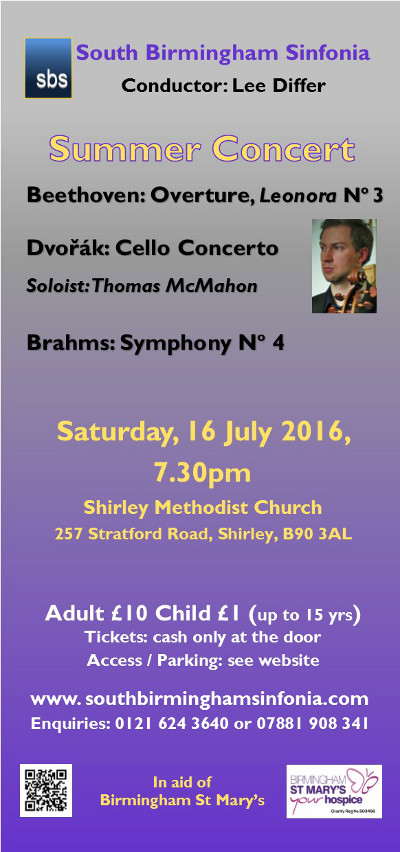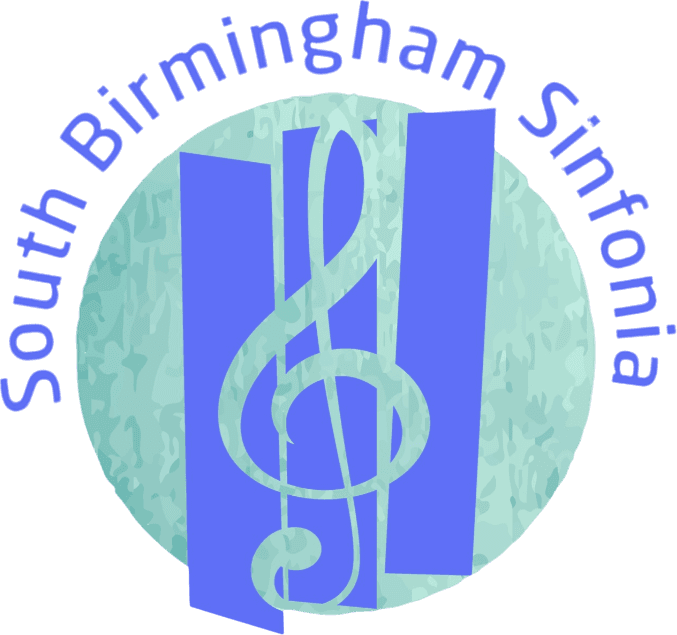
16th July 2016 at Shirley Methodist Church, Shirley, Birmingham.
The program included Brahms’ fourth symphony and the ever-popular Dvořák Cello Concerto featuring Thomas McMahon. The programme was:
- Beethoven’s Leonore overture, number 3
- Dvořák’s Cello Concerto, with Thomas McMahon
- Brahms’ Fourth Symphony
Conductor: Lee Differ
Programme Notes
Beethoven’s Leonore overture number 3
Beethoven struggled to produce an appropriate overture for his opera Fidelio, and ultimately went through four versions. His first attempt, for the 1805 premiere, is believed to have been the overture now known as “Leonore No. 2”. Beethoven then focused this version for the performances of 1806, creating “Leonore No. 3”. The latter is considered by many listeners as the greatest of the four overtures, and is normally played (as SBS will) as a concert overture.
Dvořák’s cello concerto in B minor
This well-known concerto was written in 1894–1895 and is scored for full orchestra and consists of three movements,
- Allegro
- Adagio, ma non troppo
- Finale: Allegro moderato – Andante – Allegro vivo
The piece has remained popular since Dvořák’s time. Brahms (friend and mentor to Dvořák) is reported as saying: “If I had known that it was possible to compose such a concerto for the cello, I would have tried it myself!”
Brahms’ Fourth Symphony
The fourth symphony by Brahms is in E minor with the usual four movements, marked as follows.
- Allegro non troppo
- Andante moderato
- Allegro giocoso
- Allegro energico e passionato
The first movement starts with a serene lilting melody. The music is in sonata form and shows off Brahms’ typical inventiveness and ability to create musical variations on a theme. Some commentators have remarked that the music is “powerfully organic and continuously unfolding” and others see a “fateful air” in its characteristic chain of descending thirds.
The second movement features a theme in the Hypophrygian mode, usually associated with Church music, which is heard unaccompanied at the beginning by the french horns.
The third movement is, unusally for Brahms’ symphonies a true scherzo. Unusually for a scherzo it is in a slightly foreshortened sonata form with fugato passages and a slower “trio” in the development section.
The famous fourth movement is a passacaglia, essentially a set of 32 variations on a ground bass, though the term “passacaglia” is usually used to imply, as here, that the main theme can appear in higher parts too. Brahms’ eight bar theme is a particularly rich one with chromatic harmony including an augmented sixth chords, and with his usual invention Brahms ekes out every possible emotion from the range the theme offers.
